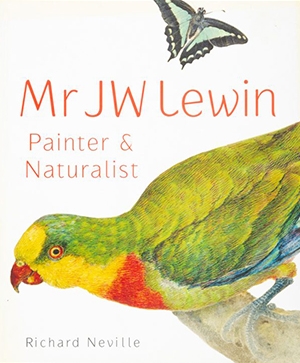Richard Neville
News from the Editor's Desk - October 2016
Friday, 23 September 2016News from the Editor's Desk in the October issue of Australian Book Review.
... (read more)John Thompson reviews 'Mr JW Lewin: Painter & Naturalist' by Richard Neville
Rich in achievement, the artist and naturalist John William Lewin died in Sydney on 27 August 1819; he was forty-nine. With public funds, a stone was erected over his grave in the city’s new cemetery in Devonshire Street. While the inscription referred to Lewin’s official status as the town coroner, its discursive text lamented the loss ‘to this country of an Eminent Artist in his line of Natural History Painting in which he excelled’. Two years previously, in an official dispatch commending several fine drawings to the secretary of colonies in London, Governor Lachlan Macquarie – the last but most significant of a succession of vice-regal admirers and patrons – had praised ‘the Masterly Hand of Mr Lewin’. Schooled in England in a tradition of generic natural history illustration in which specimens were placed at the centre of a page devoid of all context, in Australia Lewin’s work was transformed by precise observations and an innovative approach to the illustration of natural history that was unprecedented. For him, New South Wales – its landscape, flora, and fauna, its Indigenous inhabitants, its own growth to a settled colony – was literally inspiring.
... (read more)John Thompson reviews 'One Hundred: A Tribute to the Mitchell Library' by Richard Neville and Paul Brunton
Since its official opening in March 1910, Sydney’s Mitchell Library has become one of Australia’s pre-eminent cultural assets. This remarkable institution was named in honour of the reclusive bachelor collector and bibliophile David Scott Mitchell (1836–1907), whose private library sits at its heart and whose fortune provided a rich endowment to support its continued growth and enrichment.
... (read more)'September 11: A Symposium'
Sunday, 01 September 2002Never far from one’s mind these days, the events of September 11, 2001, and their direct aftermath in Afghanistan and elsewhere, had to be prominent in this month’s issue of ABR, such is their complex resonance and ubiquitous iconography. To complement Morag Fraser’s essay in this issue on the consequences of ‘September 11’ for civic ...

